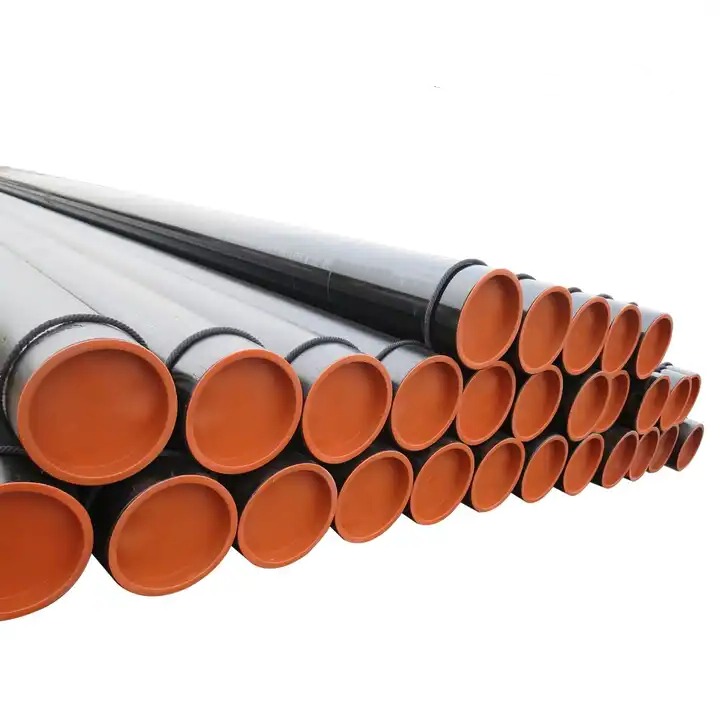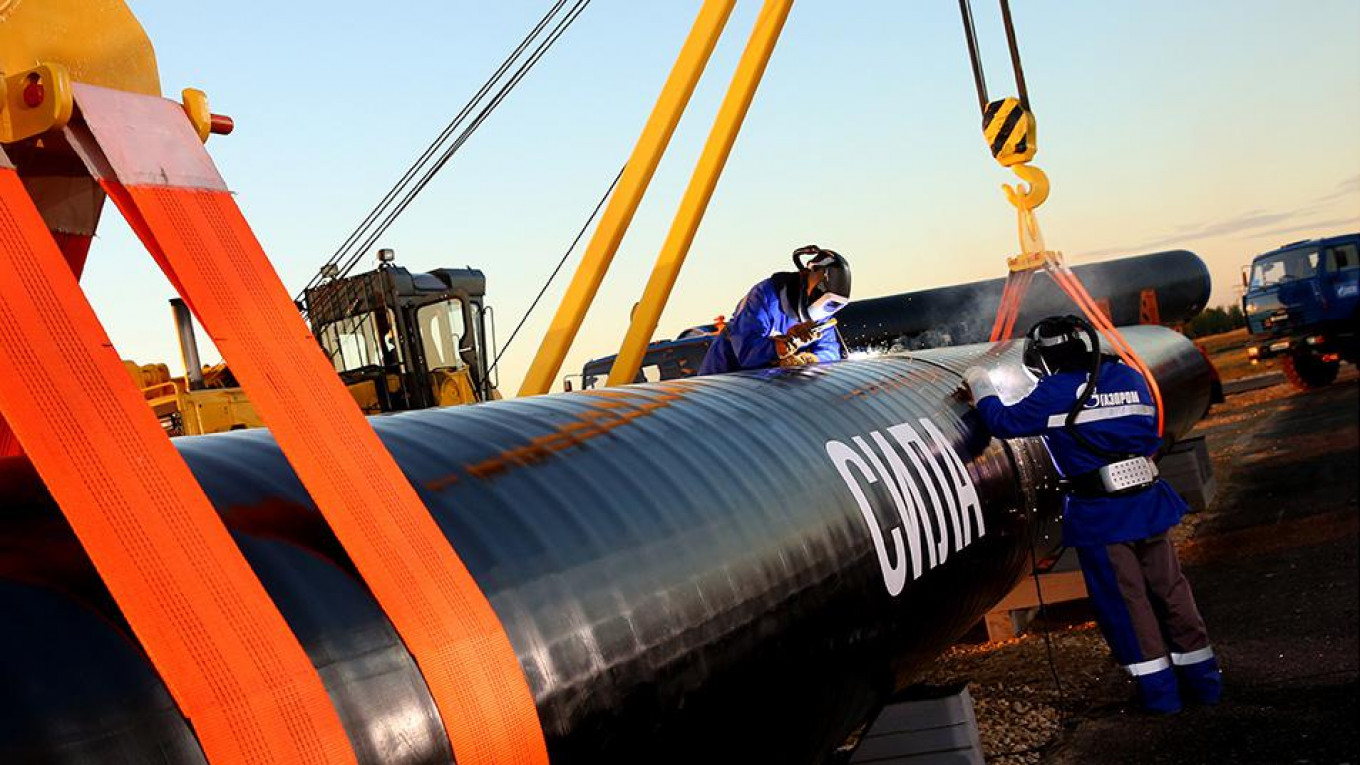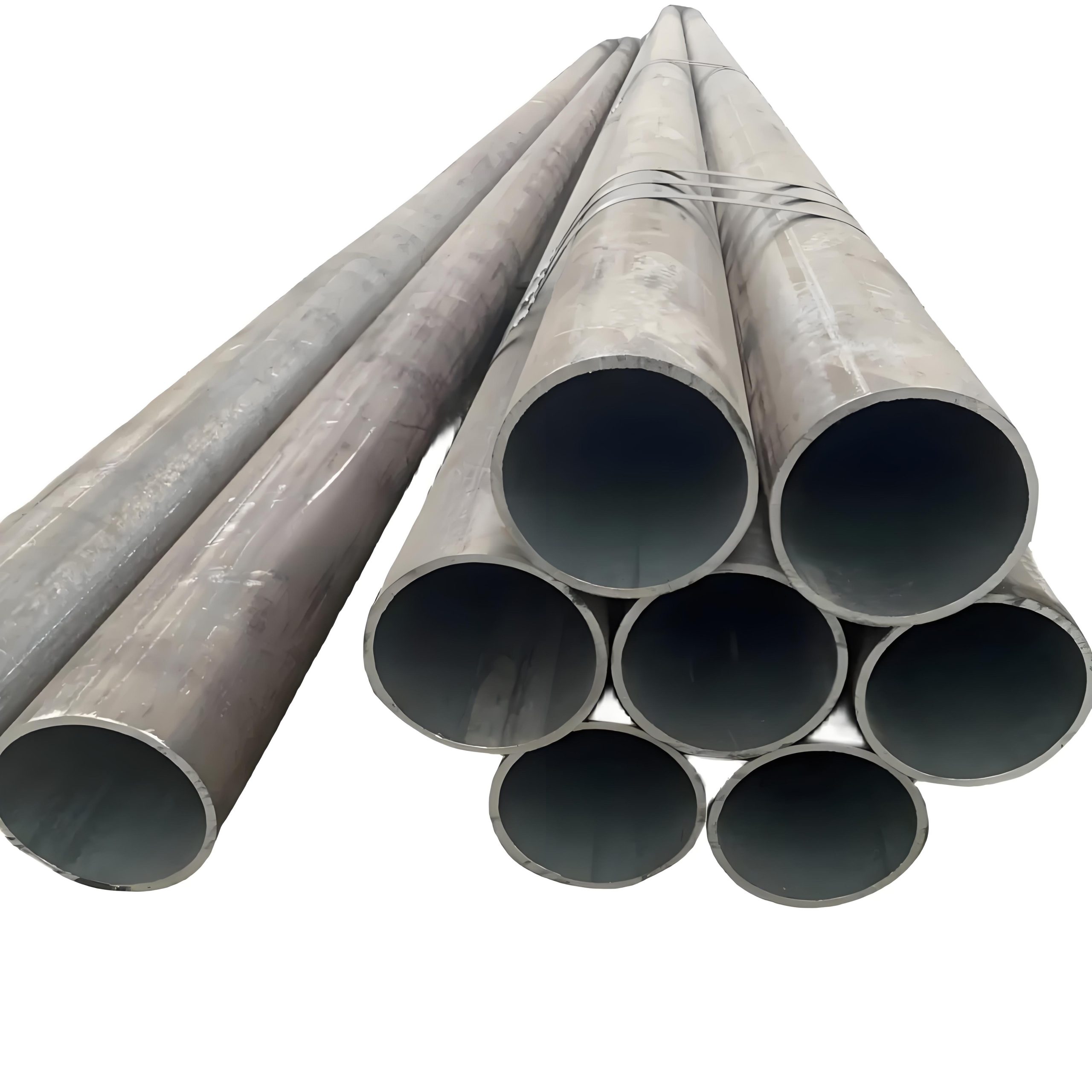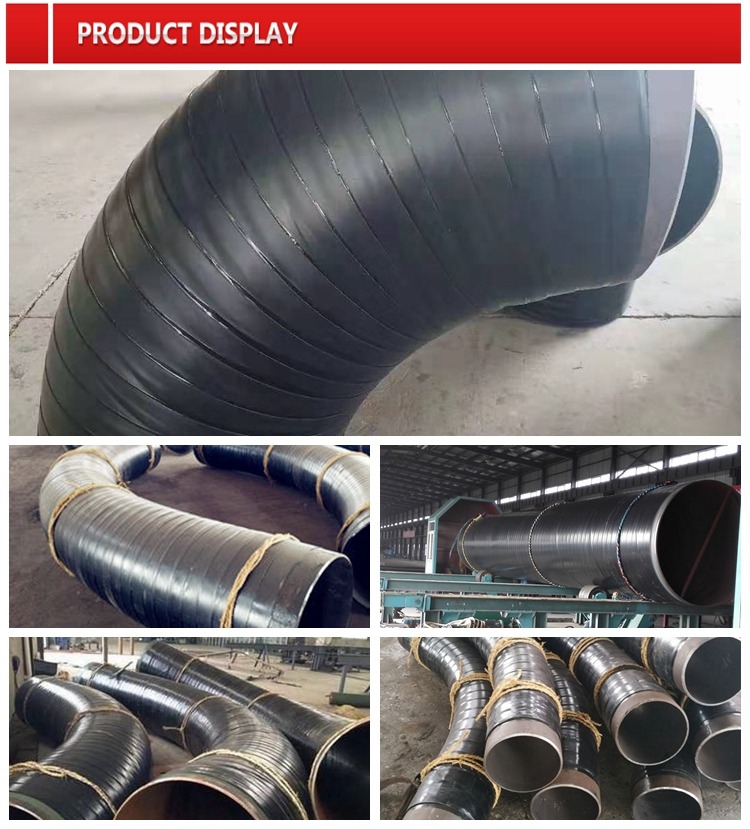API 5L Grade X65 PSL1 and PSL2 Carbon Steel Pipe

The Engineering of Endurance: A Comprehensive Study of API 5L Grade X65 PSL1 and PSL2 Carbon Steel Pipe
In the expansive and unforgiving world of energy transportation, the pipeline is the unseen, monolithic artery of global civilization. The integrity of this entire vast network—which traverses continents, withstands tectonic stresses, and resists immense internal pressure—rests upon the specifications of a single, foundational material: **API 5L Grade X65 Carbon Steel Pipe**. This material is not a generic commodity; it represents a highly specialized class of High-Strength Low-Alloy ($\text{HSLA}$) steel, engineered to deliver exceptional performance where failure is not merely a cost, but a catastrophe. The technical journey into the API 5L X65 grade is, however, incomplete without a deep and rigorous exploration of its two defining quality tiers: **PSL1** (Product Specification Level 1) and **PSL2** (Product Specification Level 2). This distinction is the bedrock of modern pipeline engineering, separating standard, basic quality from the high-integrity, mission-critical performance demanded by the most challenging transmission projects globally.
The selection of X65 is driven by a powerful economic and engineering imperative. With a guaranteed minimum yield strength of $65,000 \text{ psi}$ (approximately $450 \text{ MPa}$), X65 allows designers to specify a significantly **thinner wall thickness** compared to lower grades (like $\text{Grade B}$ or X42) while maintaining the required pressure capacity. This reduction in wall thickness translates directly into massive savings in material cost, reduced welding time, and decreased overall project expenditures. But this efficiency comes with an elevated metallurgical challenge: how to achieve such high strength without compromising the material’s ductility, its fracture toughness, and, most critically, its **field weldability**. The answer lies not just in the X65 chemistry, but in the stringent, differentiated quality controls of PSL1 and PSL2.
I. The X65 Metallurgy: Balancing Strength with Weldability
The journey into X65 begins in the steel mill, where strength is precisely engineered through a technique known as **Thermo-Mechanical Controlled Processing ($\text{TMCP}$)** or controlled rolling. Unlike conventional steel, X65’s strength does not rely on a high carbon content (which would make it susceptible to cracking during field welding). Instead, $\text{TMCP}$ refines the microstructure, producing an ultra-fine ferrite-bainite structure, while micro-alloying elements—chiefly Niobium ($\text{Nb}$), Vanadium ($\text{V}$), and Titanium ($\text{Ti}$)—enhance precipitation hardening. This allows X65 to achieve its $450 \text{ MPa}$ yield strength while maintaining a relatively low carbon equivalent ($\text{CE}$).
The $\text{CE}$ is perhaps the most critical metallurgical indicator for any line pipe steel. It is a calculated value ($\text{CE}_{\text{IIW}}$ or $\text{P}_{cm}$) that summarizes the collective hardening effect of all alloying elements. For X65, the $\text{CE}$ must be kept low (typically below $0.43$ for the highest quality pipe) to prevent the formation of brittle martensite in the Heat-Affected Zone ($\text{HAZ}$) during the rapid cooling of field welding. If the $\text{CE}$ is too high, the pipe becomes highly susceptible to **hydrogen-induced cold cracking**, demanding excessive preheating, which slows construction and increases cost. Therefore, the successful application of X65 is an elegant balancing act: maximizing strength while minimizing $\text{CE}$ to ensure safe, economical field fabrication. This fundamental tension is immediately reflected and resolved within the API 5L PSL specifications.
II. The Defining Divide: PSL1 Versus PSL2
The API 5L standard establishes the two distinct product specification levels, and for X65, this distinction is not a minor footnote but the central technical decision influencing the entire project’s risk profile, cost, and lifespan. The difference between PSL1 and PSL2 defines the level of assurance the manufacturer must provide regarding the pipe’s fitness for service.
PSL1: The Foundational Specification
PSL1 represents the basic, minimum standard for the X65 grade. It guarantees the minimum yield and tensile strength requirements and specifies basic limits for carbon, manganese, phosphorus, and sulfur. It provides a reliable, structurally sound pipe suitable for non-critical applications, moderate pressure, or environments where the consequences of failure are relatively contained. Under PSL1, the requirements for material traceability and specific non-destructive testing ($\text{NDT}$) are less stringent. For instance, fracture toughness testing (Charpy V-Notch) is typically **optional** or only required at the purchaser’s request. There is no mandatory limit on the maximum carbon equivalent, meaning a PSL1 X65 pipe might demand more careful welding procedures in the field than its PSL2 counterpart.
PSL2: The Mission-Critical Standard
PSL2 transforms the X65 pipe from a standard component into a certified, high-integrity structure. PSL2 mandates a set of supplemental requirements that are absolutely critical for high-pressure, large-diameter, low-temperature, or sour service applications where public safety and environmental protection are paramount. The cost of a PSL2 pipe is necessarily higher, reflecting the immense increase in testing, documentation, and quality control rigor. Key mandatory differences in PSL2 include: **mandatory maximum limits on Carbon Equivalent ($\text{CE}$)** to guarantee weldability; **mandatory Charpy V-Notch impact testing** (toughness assurance); and **mandatory $100\%$ non-destructive inspection** of the pipe body and seam welds, often involving Automated Ultrasonic Testing ($\text{AUT}$). The PSL2 specification is the engineering commitment that the pipe will not only withstand pressure but will also arrest a brittle fracture before it can propagate catastrophically along the line.
| Parameter | PSL1 (Standard Quality) | PSL2 (High Quality) |
|---|---|---|
| Yield Strength (Min.) | $450 \text{ MPa}$ ($65,000 \text{ psi}$) | $450 \text{ MPa}$ ($65,000 \text{ psi}$) |
| Ultimate Tensile Strength (Min.) | $535 \text{ MPa}$ ($77,000 \text{ psi}$) | $535 \text{ MPa}$ ($77,000 \text{ psi}$) |
| Mandatory Max. CE Limit | No mandatory max limit | Mandatory maximum $\text{CE}$ specified (e.g., $\le 0.43$) |
| Fracture Toughness ($\text{CVN}$) | Optional/Purchaser specified | Mandatory, minimum absorption energy required |
| Non-Destructive Testing ($\text{NDT}$) | Minimum requirements, often sampling | $100\%$ volumetric inspection of pipe body and weld seam (Mandatory) |
III. Chemical Composition: The Recipe Under Scrutiny
The chemical composition requirements for X65 are where the technical superiority of PSL2 is most clearly defined. While both levels must adhere to minimum mechanical properties, the limits imposed on the alloying elements in PSL2 directly reflect the need for predictable behavior during high-speed, automated field welding.
The Significance of P and S Limits
For all grades of steel pipe, Phosphorus ($\text{P}$) and Sulfur ($\text{S}$) are tightly controlled impurities. They tend to segregate at the grain boundaries, drastically reducing the steel’s toughness and making it susceptible to lamellar tearing and centerline segregation, particularly in welded pipe. For **X65 PSL2**, the maximum limits on $\text{P}$ and $\text{S}$ are significantly lower than for PSL1, often capped at $0.025\%$ and $0.015\%$ respectively, or even tighter. This requires cleaner steelmaking practices (secondary refining) and directly contributes to a more uniform, robust microstructure, which is essential for surviving the fatigue and cyclic stresses of a high-pressure line.
The Mandatory $\text{CE}$ Cap in PSL2
As noted, the most defining chemical requirement for **PSL2** is the mandatory cap on the **Carbon Equivalent ($\text{CE}$)**. API 5L dictates that for PSL2 pipe above a certain diameter, the $\text{CE}$ must be calculated and must not exceed a specified maximum value (e.g., $0.43$ or $0.45$). This is the manufacturer’s guarantee to the pipeline owner that the pipe can be safely welded in the field using standard, efficient procedures (low preheat, high welding speed) without incurring the risk of hydrogen-induced cracking. In contrast, a PSL1 X65 pipe may technically meet the strength requirement, but its $\text{CE}$ could be higher, forcing the user to implement costly, slow preheating procedures in the field.
| Element | PSL1 (Max) | PSL2 (Max) | Rationale for PSL2 Limits |
|---|---|---|---|
| Carbon ($\text{C}$) | $0.28$ (Seamless) / $0.26$ (Welded) | $0.22$ (Seamless) / $0.22$ (Welded) | Lower $\text{C}$ directly reduces $\text{CE}$ and cold cracking risk. |
| Manganese ($\text{Mn}$) | $1.65$ | $1.60$ | Controlled to maintain strength without excessive $\text{CE}$. |
| Phosphorus ($\text{P}$) | $0.030$ | $0.025$ | Reduced risk of segregation and embrittlement. |
| Sulfur ($\text{S}$) | $0.030$ | $0.015$ | Significantly improves toughness and weld integrity. |
| Carbon Equivalent ($\text{CE}_{\text{IIW}}$) | No limit | Mandatory $\le 0.43$ (Typical) | Guarantee field weldability without excessive preheat. |
IV. Mechanical Properties and the Absolute Necessity of Toughness
While the minimum yield strength for X65 is the same for both PSL1 and PSL2, the true distinction lies in the assurance of ductility and, most importantly, **fracture toughness**. The technical requirements for PSL2 go far beyond simple tensile testing.
Fracture Toughness: The $\text{CVN}$ Mandate
For any pipeline operating in cold weather (which includes deep burial environments), the risk of brittle fracture is paramount. A small defect could potentially initiate a crack that propagates at the speed of sound for hundreds of kilometers. The $\text{PSL2}$ specification counteracts this risk by mandating the **Charpy V-Notch ($\text{CVN}$) Impact Test**. This test measures the energy absorption capability of the steel at a specified low temperature (often $0^\circ\text{C}$ or $-20^\circ\text{C}$), providing a direct measure of the material’s toughness—its ability to resist fast fracture. The minimum required $\text{CVN}$ energy level is specified for both the pipe body and the weld metal, guaranteeing that even if a crack starts, the tough steel will absorb sufficient energy to **arrest the fracture** before it becomes catastrophic. This crucial requirement is **optional** in PSL1, making PSL2 indispensable for all high-consequence pipeline routes.
Ductility and Flattening Tests
Both PSL1 and PSL2 require testing for ductility (elongation in the tensile test) and often a **flattening test** for seamless pipe or a **bend test** for welded pipe. However, for PSL2 welded pipe (often produced via $\text{SAW}$ or $\text{DSAW}$), the bend test is a mandatory quality assurance step, verifying the structural integrity and flexibility of the weld seam itself under severe plastic deformation.
| Property / Test | PSL1 Requirement | PSL2 Requirement | Significance |
|---|---|---|---|
| Yield Strength ($\sigma_{y}$) Min. | $450 \text{ MPa}$ | $450 \text{ MPa}$ | Core design strength requirement. |
| Ultimate Tensile Strength ($\sigma_{ts}$) Min. | $535 \text{ MPa}$ | $535 \text{ MPa}$ | Resistance to rupture. |
| Fracture Toughness ($\text{CVN}$) | No mandatory requirement | Mandatory (Specific $\text{Joules}$ at low temp) | Prevents brittle fracture propagation (crack arrest). |
| Weld Seam Bend Test | Mandatory for welded pipe | Mandatory for welded pipe | Verifies weld metal ductility and fusion integrity. |
V. Manufacturing and Non-Destructive Testing (NDT) Rigor
The manufacturing process itself must be controlled to meet the stringent PSL2 requirements, with the final product undergoing an exponentially more rigorous inspection regime.
Manufacturing Processes
X65 pipe is produced via both seamless ($\text{SMLS}$) and welded methods. Seamless pipe is preferred for high-pressure, smaller-diameter, or thicker-wall applications. Welded pipe is essential for the large-diameter transmission lines. For PSL2 X65 pipe, the $\text{DSAW}$ (Double Submerged Arc Welded) process is often mandated for its superior quality and control over the weld metal chemistry. $\text{DSAW}$ provides excellent uniformity and the highest integrity weld possible for large pipe, essential for surviving the fatigue stresses inherent in high-pressure gas or oil transmission.
The $100\%$ $\text{NDT}$ Commitment
The core difference in final quality assurance is the scope of Non-Destructive Testing. For **PSL1**, $\text{NDT}$ of the weld seam may be based on statistical sampling, and testing of the pipe body may be minimal. For **PSL2**, the commitment is absolute: **$100\%$ volumetric inspection** of the entire weld seam and **$100\%$ non-destructive inspection** of the entire pipe body is mandatory. This often means every millimeter of the pipe’s length is scanned by Automated Ultrasonic Testing ($\text{AUT}$) to detect internal flaws, laminations, or inclusions that could compromise the pipe wall’s integrity under extreme pressure. This is a costly but indispensable measure of assurance, ensuring that no manufacturing defect escapes detection before the pipe is buried.
| Requirement | PSL1 Specification | PSL2 Specification | Process Verification |
|---|---|---|---|
| Manufacturing Method | $\text{SMLS}$, $\text{ERW}$, $\text{SAW}$ allowed | Typically $\text{SMLS}$ or $\text{DSAW}$ required | Verified through documentation and mill audit. |
| Weld Seam $\text{NDT}$ | Radiography or UT (Often sampling) | $100\%$ Automated Ultrasonic Testing ($\text{AUT}$) | Guarantees complete fusion and absence of planar defects. |
| Pipe Body $\text{NDT}$ | Not mandatory | Mandatory volumetric inspection (UT/ET) | Detects laminations or inclusions in the body of the steel. |
| Hydrostatic Test | Mandatory (minimum pressure) | Mandatory (minimum pressure maintained for specified time) | Final physical verification of pressure containment capacity. |
The Critical Choice of Specification Level
The API 5L Grade X65 steel pipe is the culmination of decades of metallurgical research, providing the foundational strength necessary for the modern energy grid. Yet, the true measure of its technical performance lies entirely within the choice between PSL1 and PSL2. The X65 PSL1 pipe offers a reliable, low-cost solution for standard applications, serving as the industry’s basic assurance of quality.
The **X65 PSL2** pipe, however, represents the absolute zenith of non-alloy line pipe engineering. Its mandatory, restrictive limits on $\text{CE}$ guarantee predictable field weldability, while its indispensable requirements for $\text{CVN}$ toughness and $100\%$ $\text{NDT}$ provide the ultimate assurance against brittle fracture and catastrophic failure. In any critical high-pressure, high-consequence transmission project, the technical measures of the X65 PSL2 specification are not optional luxury features; they are the fundamental and non-negotiable insurance policy against both environmental hazard and engineering failure, guaranteeing that the pipeline will endure for its entire intended design life.




